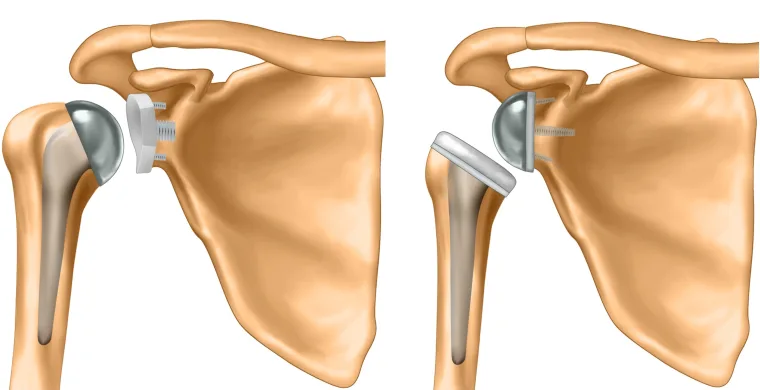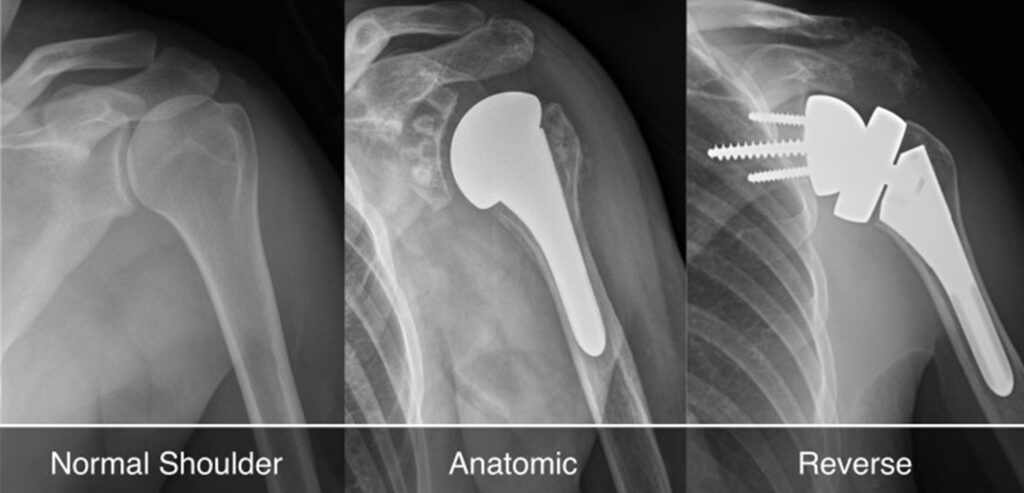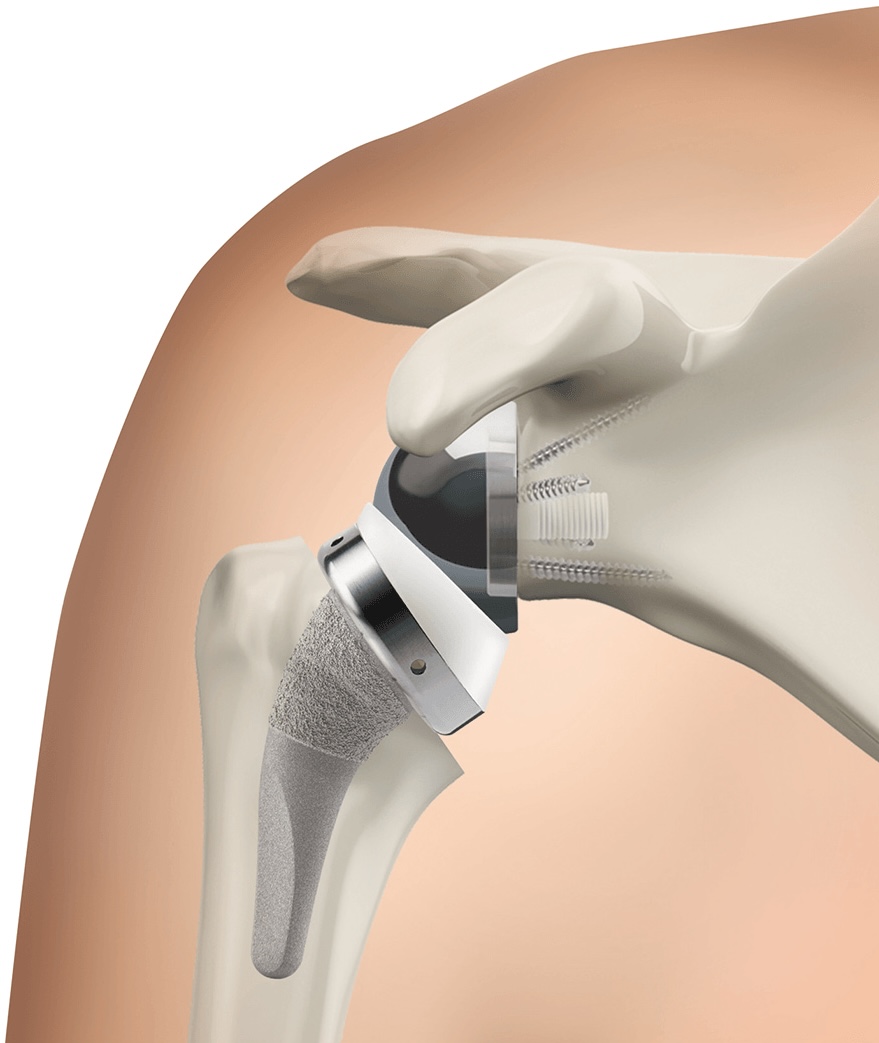Total shoulder replacement surgery is typically recommended for individuals experiencing severe shoulder pain or reduced mobility that significantly impacts daily life.
If non-surgical treatments such as physical therapy, medications, or injections fail to provide relief, surgery may be the best option to restore function and alleviate pain. Common conditions that may lead to this surgery include:
- Advanced osteoarthritis or rheumatoid arthritis in the shoulder
- Irreparable rotator cuff tears or poor tendon quality
- Severe shoulder fractures or trauma
- Avascular necrosis, where the ball of the shoulder joint loses its blood supply, leading to bone damage
See shoulder arthritis below for more information on the condition, or proceed on this page to learn about the surgical options:
What the surgery involves
Two primary types of surgery may be performed, depending on your specific condition:
Anatomic Shoulder Replacement
Recommended when the rotator cuff tendons are intact. The ball of the upper arm bone is replaced with a metal prosthesis, and the socket is fitted with a durable polyethylene prosthesis.
Reverse Shoulder Replacement
Ideal for patients with damaged rotator cuff tendons. This procedure reverses the joint’s anatomy, placing the ball on the shoulder blade and the socket on the upper arm bone.

The procedure process will include:
- An incision to access the shoulder joint
- Removal of damaged bone and cartilage
- Placement of prosthetic components to replicate the joint
- Repairing and stitching tissues before closing the incision
What to expect after surgery
Post-surgery, your arm will be placed in a sling for comfort. Pain relief is managed with medications, and you’ll begin gentle exercises to promote mobility. Key recovery milestones include:
- First few days: Limited arm movement with gradual introduction of simple exercises. Pain and swelling are managed with ice packs and medication.
- Two to six weeks: Supervised physical therapy to regain strength and range of motion. Most patients can manage basic daily activities by this stage.
- Six weeks: Depending on your progress, more intensive physical therapy may be introduced, and you might return to light activities, such as driving or desk work.
Read the full rehabilitation protocols below for an in depth review of what to expect:

How long will you need to stay in hospital?
Most patients stay in the hospital for one or two nights following surgery. You may sometimes be discharged on the same day if your condition allows. During your stay, the medical team will monitor your progress and provide guidance on managing your recovery at home.
Usual recovery times
The recovery timeline for total shoulder replacement varies based on factors such as age, overall health, and adherence to rehabilitation. Generally:
- You’ll wear a sling all the time for the first 2-3 days and then at night time only for 4 weeks, you are encouraged to move your arm gently as soon as possible
- Pain typically decreases significantly after the first week
- Full recovery, including resuming most activities and sports, can take six to twelve months, depending on your condition and rehabilitation efforts
Potential risks
- Surgery may not entirely eliminate shoulder pain or restore joint strength and mobility
- The ball of the new joint may come out of the socket
- Bones like the humerus, scapula, or glenoid can break during or after the procedure
- Components may wear out or loosen, requiring revision surgery
- Surrounding muscles and tendons may wear out post-surgery
- Injured nerves can lead to numbness, weakness, or pain
- Clots may form in the veins, potentially causing serious complications
- Incision or deeper tissue infections may require further treatment
The decision to proceed with total shoulder replacement
This personal decision should be made after thoughtful consideration and consultation with Dr Lambers. Take the time you need to weigh your options and ensure you feel confident that surgery aligns with your long-term health goals and lifestyle.

